How to Choose the Best Running Shoes
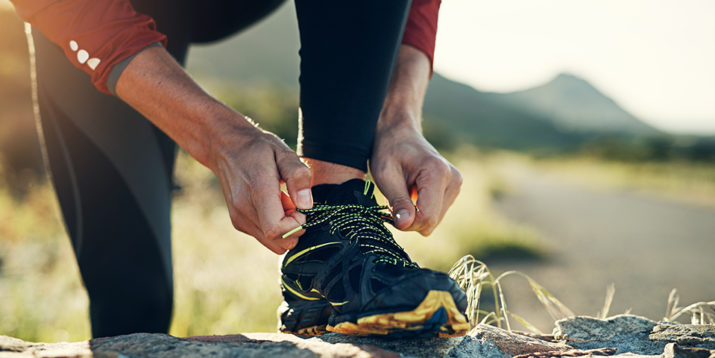
Whether you’re just getting started with running or you’re gearing up for 30 Day Breakaway, part of your prep should be getting the right shoes.
But how do you know what works for you? What are the best running shoes? And do they have to cost a lot?
“Definitely, it can feel overwhelming when you start to research shoes,” says certified running coach and trainer Kourtney Thomas, CSCS.
She says the best approach is to go to a running store, where you can get fitted and have your stride checked.
But that’s not always an option. In that case, suggests Thomas, “doing a bit of research before you buy could save you from frustration and even potential injuries.”
The best running shoes will be the ones that feel most comfortable to you, but with so many options, finding your favorites can be tough at first.
Here’s a quick guide to help you narrow down your choices.
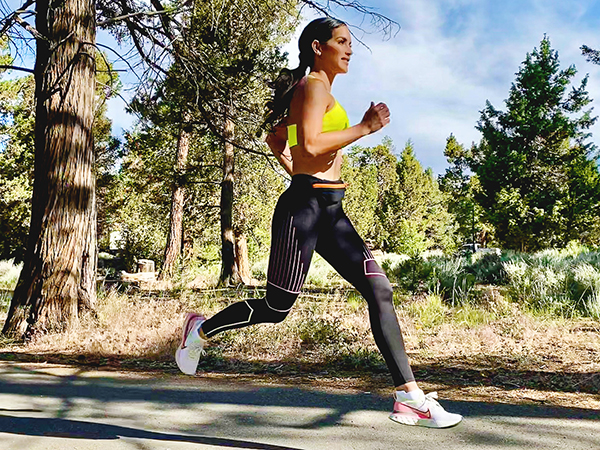
Why Do You Need Running Shoes?
Running shoes need to be comfortable, providing a balance between stability and cushioning to minimize the stress on your feet and joints during a run, explains Idalis Velazquez, BODi Super Trainer, creator of 30 Day Breakaway, and a track-and-field athlete.
The cushioning provided by your running shoes can make your runs more comfortable.
To pick the right shoes, try a bunch on, run around the store a few times, and buy the ones that feel most comfortable to you. Your body is very proficient at selecting the footwear that will benefit it most.
If you’re doing 30 Day Breakaway, wear your running shoes for the runs, and do the strength portion in cross-training shoes or even barefoot, advises Velazquez.
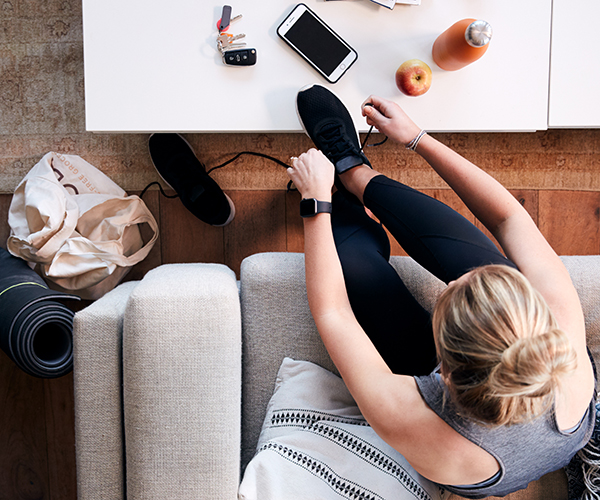
What Are The Best Running Shoes?
Now that you’re ready to start shopping for the best running shoes, let’s go into the factors to consider when comparing your options.
When you’re working toward a time-oriented goal, like the 5k you’ll do at the end of 30 Day Breakaway, you don’t have time to be sidelined by sub-par shoes.
Cushioning
- Many new runners start with shoes described as “neutral,” which means they have a medium amount of cushioning.
- If you know you prefer less cushioning, look for shoes with less of a heel drop, meaning less material between you and the ground and a flatter sole, says Thomas.
- If you’d rather get a softer feel, opt for maximum cushioning.
As you run more, you’ll be able to figure out whether you want more or less cushioning in your next pair of shoes.
In terms of specific brands that many runners consider their go-to choices, Thomas suggests:
- Maximum support: the Hoka One One
- Neutral support: Mizuno Wave Rider or Brooks Ghost
- Minimal support: New Balance Minimus line
Overall Fit
If you can go to a store (ideally, a specialty running store), then get your feet measured, Velazquez recommends. She says you may think you know your size, but your feet can change.
In general, running shoes should be a half size larger than your street shoes. Plus, different brands or models can vary drastically. She also recommends checking the fit of these features:
- Ankle Collar: Does your heel slip? How does the padding interact with the bones on the side of your ankles? Does the curve on the back irritate your Achilles tendon?
- Toebox: Look for a toebox that stays out of the way. It should allow your foot to flex and spread out naturally in both width and length — without binding or rubbing your toes.
- Outsole: Opt for materials that provide traction and durability without adding excess weight or stiffness. Choose a footprint shape that matches yours and gives you the desired level of stability underfoot.
- Heel Cushioning: You want a balance between cushioning, stability, and ground feel. Note whether the shoe touches down where you expect it to and rolls into the stride in a way that feels right.
- Forefoot Cushioning: Pay attention to the shoe’s responsiveness. You’re looking for a balance between comfort and a firm push-off platform.
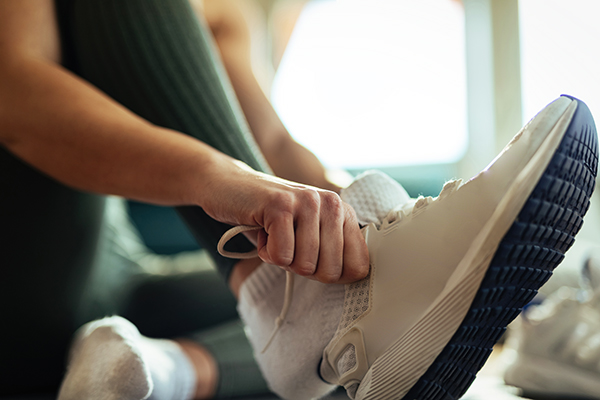
How They Feel
Try them on and see how they feel during a quick walk or jog. Are they comfortable? The best running shoes will be!
Velazquez says if they’re not perfect now, try a different pair since they won’t get better after you start running.
Also, notice whether the shoes make you feel wobbly or unsteady. This means you may not have the right midsole support. Finally, check to make sure you have a thumb’s width of space between the end of your longest toe and the end of your shoe.
“Your heel shouldn’t slip when you walk or jog, and your foot shouldn’t be spilling over the edges of the shoe,” says Velazquez.
When you do buy them, make a note in your training log, she adds. Replace your shoes every 300 to 500 miles.
With the best running shoes for your feet secured, now you can think about where they’ll take you.
Now you’re ready for 30 Day Breakaway, with Velazquez as your trainer. She’ll lead you through fast and effective resistance workouts, followed by run training. In 30 days, you — and your perfect shoes — could be running a 5k!
The Do’s and Don’ts of Choosing Running Shoes
Here are some general tips on what to look for and what pitfalls to avoid when you’re shopping for new running shoes.
DO: Seek pro advice
Specialty running store staff members know what they’re doing when it comes to fitting feet, but also fitting bodies. They’ll do a gait analysis on a treadmill to see how you actually run and to determine what sort of support you need in a shoe.
“There are biomechanics and physiological attributes that often need to be addressed,” says Melanie Kann, a New York-based certified running coach and masters coaching program lead at Calibrate.
“Do your feet tend to over-pronate (roll inward) when you run, or do you supinate (roll outward)? Do you have a low flexible arch or a high rigid arch? Do you tend to strike the ground with your heels, or do you land up on your forefoot?”
Running shoe experts not only know why these are important but also how to identify them in each runner. Then, they use this insight to match the best shoes with your feet.
DON’T: Be a slave to fashion
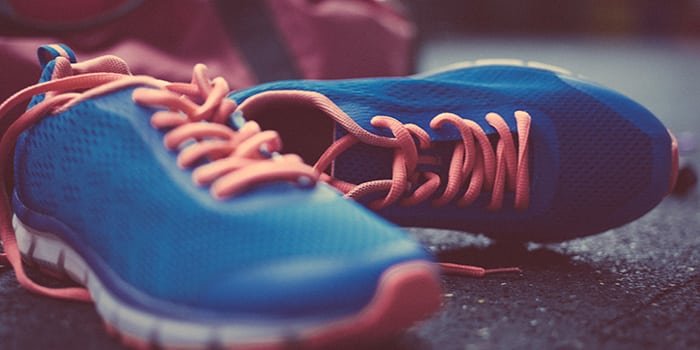
You love the latest status kicks for their looks — or that bargain pair for its price. Your body begs to differ.
“A shoe may be cute, cheap, or great for your best friend, but that does not mean it’s right for you,” says Kann. “Your body doesn’t comprehend ‘cool’ or ‘cheap.’ It only understands comfort.”
While mall discounts are enticing, specialty running shoe stores generally offer greater value. Sure, you can expect to pay upward of $100 at a specialty store. But with typically generous return policies, you can bring back running shoes you’ve already worn that didn’t end up working for you.
DO: Consider your running plans
Just as every workout has the right shoe, so does every run.
“Someone who is piling on the miles or training for a marathon will likely run the bulk of their miles in a much different shoe than someone who is focusing on speed work in order to shave seconds off of their 5K personal best,” says Kann.
Another consideration is running surface. Compared with road shoes, trail shoes have soles that are grippier and firmer for better traction and protection over rough terrain. They also tend to be less cushy than road shoes, which are designed to protect the body from repetitive impact on hard asphalt and concrete.
No matter what type of runner you are, be sure to regularly do a running workout that’s right for you.
DON’T: Fall for running shoe trends
Minimal and maximal shoes each have a place on the running shoe spectrum, but that place might not be on your feet. Minimal shoes are designed to be similar to running barefoot, with extremely thin soles and little padding.
“Unless you have very efficient biomechanics, minimal shoes may not be for you,” says Kann.
On the other end, maximal shoes have tons of cushioning and super-thick soles.
“Maximal shoes are great for runners who put extreme stress on their bodies, such as ultra-marathoners or those who have joint or back injuries and can benefit from extra shock absorption.”
For others, maximal running shoes simply might be too much shoe.
DO: Size up
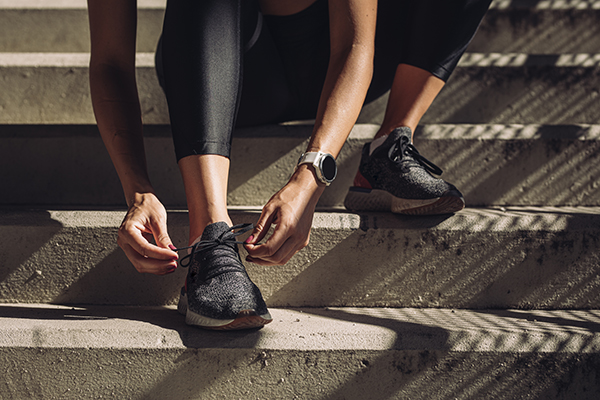
One of the biggest mistakes Kann sees people make is going for their normal shoe size in running shoes. It’s not that sneakers run small — it’s that your feet naturally swell as you pound the ground.
“If the shoe feels ‘just right’ in the store, it’ll be too small after a few miles,” says Kann. “You want about a thumb’s width of space between the end of your longest toe and the end of the shoe.”
A good rule: buy running shoes that are a half or even a full size up from your street shoes.
DON’T: Run your shoes into the ground
Another common mistake is keeping the same shoes for years, even decades. The average pair of running shoes lasts 400-500 miles. When marathon training calls for 30- and 40-mile weeks, that mileage sneaks up faster than you think.
Kann recommends letting a running app keep track of miles for you — Strava and Garmin both allow you to assign shoes to your runs and tally the mileage.
“If you can’t be bothered with an app, flip the shoes over and look at the soles,” she says. “Is the rubber worn down a lot in one particular area? Is that white midsole section beneath the rubber starting to become exposed or degraded? When you flip the shoes on their side, do you see a lot of lines in the arch area indicating the midsole has been broken down?”
If you answer “yes” to any of these, it’s time to buy a new pair.
Then get started on a running or Beachbody full workout program that’ll speed you closer to attaining your running goals.
